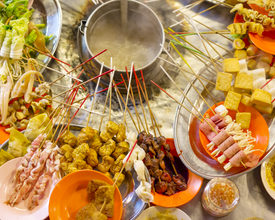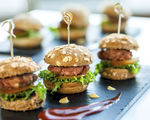Food can make or break your event. And we are not just talking from an attendee satisfaction standpoint, it can start to bust your budget if you don't negotiate it right.
Mealtimes are one of the most influential and spontaneous networking opportunities that any event has to offer. That is when your attendees come together to talk about the day's sessions, what they do and create lasting relationships.
Not only is it a great opportunity for networking, but it also takes a fair chunk of your budget. Hotels normally have a minimum food and beverage spend in their contracts that will let you know the required amount you need to hit in your meeting.
While most people sit and try to find ways to negotiate the price down, they fail to remember that by doing that you put yourself in a place to actually spend more if you exceed it. You don't get credit for the difference if you negotiate it down and then go over it, sure you lowered your liability but what if there was something better you could do?
Below are tips on how to make your food - and therefore your event - memorable and influential. To generate a successful event, you must keep in mind three things: the price, taste, and aesthetic of the food you are serving.
Price
Rather than wasting your limited resources attempting to lower a minimum you are likely to exceed, spend your time negotiating the additional benefits, savings, and concessions you would like to be provided for going over the minimum. The important thing is to get your hotel sales manager to commit to these additional benefits within your contract.
Let's do some math.
Your F&B budget is 15,500 and the hotel's minimum is 10,000. 15,500 - 10,000 = $ 5,500 difference. That is what you can ask for in benefits if you exceed the minimum. Think of the extras that you may need like suite upgrades for VIPs, airport transfer, free wifi in rooms, etc. Leverage the amount that you are willing to spend based off of their minimum.
Taste
Taste cannot be overlooked, but it is not necessary to spend big bucks to offer delicious food options. Consider sourcing your ingredients locally, which will in turn help the local community where your event is, the environment and also save you big bucks on shipping costs. Additionally, suggest your caterers to incorporate bruised fruits and vegetables into the dishes, so that foods that normally would have been thrown out can be incorporated into your spread.
Next, your food is the fuel that drives your attendees so increase the amount of fresh foods you provide. If you are hosting a one-day event that is packed with back to back sessions, in small rooms with a lot of bodies and possible harsh lighting, your attendees can start to feel drained and unengaged. If you start feeding your attendees healthier options and less sugars, you will notice their energy and engagement level increase.
Aesthetic
When it comes to food at events, presentation is everything. The aesthetics and names of food are equally as important as how they taste. Especially in the digital age where everyone posts pictures of their food on Facebook, Instagram, Twitter and Snapchat. This also is giving your event free promotion and increasing engagement if you have a social media post worthy food! Your attendees are your best advocates, so give them food that they will want to snap, tweet, post and share.
Don't forget to keep up with trends, and serve your guests the food of the now. Keep in mind that in-vogue foods are often just spins offs on old-school classics - for example, the re-emergence of the donut as a classy dessert circa last year - so use this freedom to test out your own culinary trends.
In conclusion, you can have the best of both worlds: F&B menu that excites your attendees and one that won't break your budget. Keep up with the latest food fads, and peak your guests' interests by putting new spins on old favorites. If you’re serving food that’s as good as it is interesting, you will have happy, satisfied attendees!





